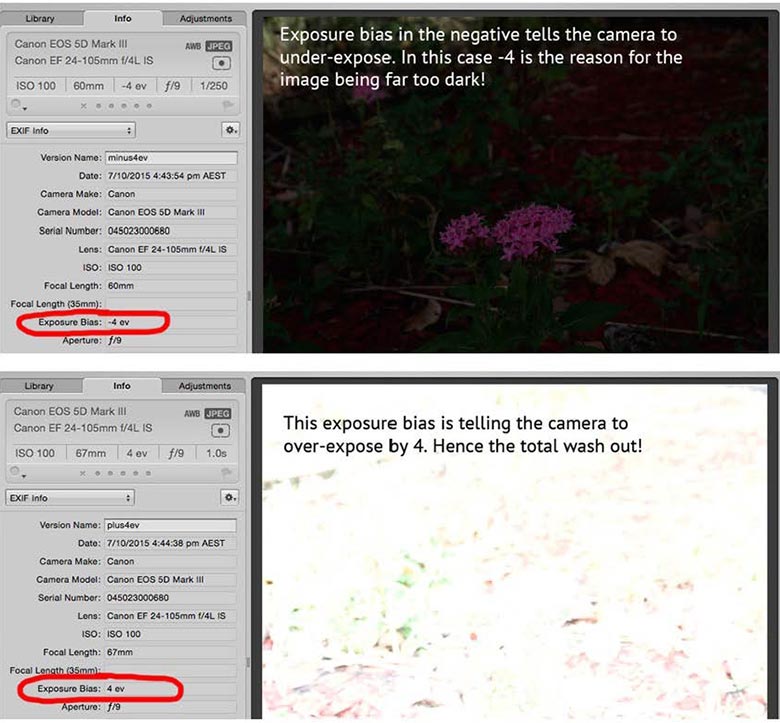Each week we receive emails from beginners with exposure problems, saying their images are either too dark or completely washed out. Ninety nine percent of the time “Exposure Bias” is to blame.
The quickest fix for this problem of course is to reset your camera back to factory default settings (check manual guide). This will zero back any exposure bias set within your main camera menu.
It could also be that you’ve accidentally adjusted exposure compensation for that particular mode. Easy to do when you are first learning and pressing all the buttons. To check if this is the case, half press your shutter button to focus while looking through the rear view, take note of the exposure line and see if it is to the right or left of the middle marker. If you find it isn’t zeroed, then look for a plus and minus symbol on your camera (+/-). Press that button and use your main dial to zero back the exposure line. Take a few test shots. I’m sure you’ll now find everything back to normal.
Take the Example Above
Note the exposure marker is on the positive side. Therefore the resulting images will be over-exposed / brighter than normal. Of course when you have +4 or -4 like the examples above, you’ll get very dark images or total washouts.
Now you know the probable reason why you get with total black or total white images, and how to fix it when you are out and about on a photoshoot.
Don’t feel foolish if you didn’t realize this one problem was causing you much grief with your photography. Professionals encounter this common exposure problem often. The difference is that when professionals take a test shot, which they always do first, they immediately realize that their exposure compensation was incorrect if they have a blackout or washed out photo. In time you also will have that experience.
Sign-up for our online photography course and learn how to master your digital camera in easy to understand “at your own pace” lessons.
Click here for more information and sign-up details

